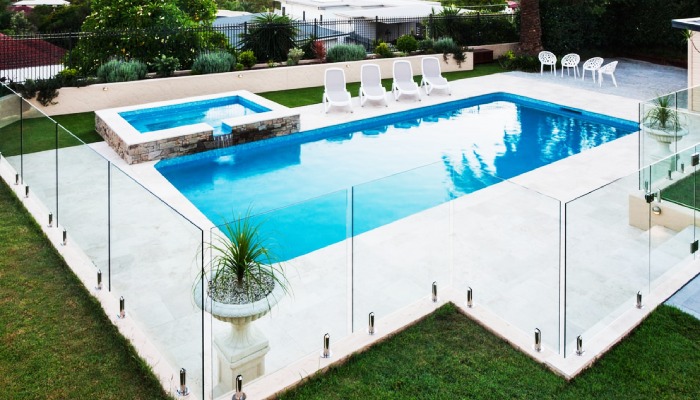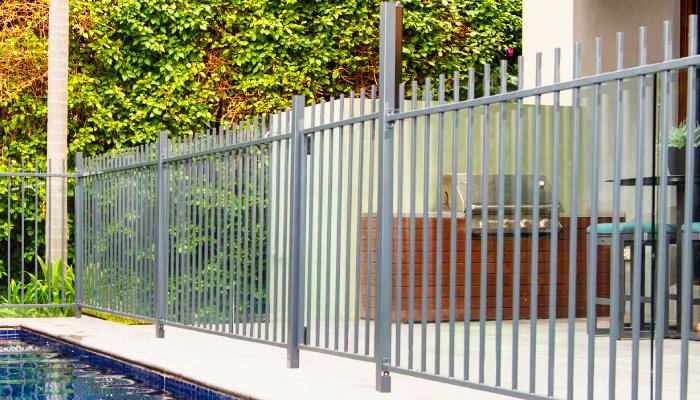
Pool Fencing Laws in Queensland
Pool fencing laws in Queensland play a crucial role in ensuring the safety of families, particularly young children. These regulations are designed to further pool safety barrier minimize the risk of accidental drownings by enforcing specific safety standards for pool enclosures. Drowning is one of the leading causes of preventable death in children under five, which is why these laws are so strictly enforced.
Every pool owner, whether they have a small residential pool or manage a larger communal pool, has a responsibility to comply with these regulations. The aim of the pool barriers laws is not just to create a barrier around the pool, but to ensure the fence is built and maintained to an appropriate standard that effectively restricts unsupervised access. Pool fencing laws provide guidelines on height, gate security, and material strength to create a secure environment.
In this article, we will delve into the key aspects of Queensland’s pool fencing laws, providing you with the essential information to ensure your pool is safe and compliant. Whether you are building a new pool or upgrading an existing one, understanding these regulations is a necessary step toward safeguarding your family and community.

Key Requirements for Pool Fencing in Queensland
Queensland’s pool fencing laws set out clear and strict requirements to ensure maximum swimming pool safety. These regulations cover everything from the height of the fence to the materials used, with the goal of preventing children from accessing pools unsupervised. Below are the key requirements every pool property owner here in Queensland must follow to stay compliant with the relevant pool safety laws:
- Minimum Height: Pool fences must be at least 1.2 meters high from the ground level. This ensures that children cannot easily climb over the fence. Any objects near the fence that could assist climbing, such as furniture or garden features, must also be placed away from the pool area.
- Gaps and Openings: The fence should have no gaps greater than 100mm, either between the panels or underneath the fence. This prevents children from squeezing through or crawling under the barrier.
- Gate Requirements: Pool gates must be self-closing and self-latching. The latch must be positioned at least 1.5 meters above the ground to keep it out of a child’s reach. Gates should open outward, away from the pool, and should never be propped open or left unsecured.
- Materials and Durability: The fencing materials must be durable and strong enough to withstand pressure. Common materials include metal, glass, and timber, but all must meet the safety standards outlined by the Queensland Building and Construction Commission (QBCC). The fence must also be maintained in good condition, with no rust, loose panels, or faulty gates.
- Non-Climbable Zone: There must be a 900mm non-climbable zone around the outside of the pool fence. This means no objects like trees, shrubs, or decorative items should be within this area that could assist a child in climbing over the fence.
- Signage: In addition to the fence, a compliant CPR (cardiopulmonary resuscitation) sign must be displayed prominently within the pool area. This is a legal requirement to provide crucial life-saving information in case of an emergency.
By following these requirements, pool owners in Queensland can ensure that their swimming pool complies with all relevant pool safety laws. Staying compliant with these regulations, often monitored by the local council, is essential for protecting young lives and avoiding hefty fines.
How to Ensure Your Pool Fence is Compliant
Navigating pool fence regulations in Queensland can seem overwhelming, but ensuring your pool fence is compliant is essential for both the safety of your household and fulfilling your legal obligations to the local council. Pool safety compliance is not just about avoiding fines; it’s about preventing accidents that could put lives at risk. Fortunately, maintaining compliant pool safety barriers doesn’t have to be a daunting task if you follow a few key steps:
- Regularly Inspect Your Fence: One of the simplest ways to stay compliant is to regularly inspect your pool fence for damage or wear. Check that the fence is still the required height of 1.2 meters and that there are no gaps greater than 100mm. Look for rust, loose panels, or any signs of deterioration in the materials. Over time, even the best-maintained pool safety barriers can degrade, so it’s important to be proactive.
- Test the Gate: The pool gate must be self-closing and self-latching to ensure pool safety compliance. Test the gate regularly to ensure it automatically closes from any open position and that the latch is functioning correctly. Make sure the latch is at least 1.5 meters above the ground and that the gate opens outward, away from the pool area.
- Clear the Non-Climbable Zone: Maintain a clear 900mm non-climbable zone around the entire pool fence. Remove any objects that could provide leverage for a child to climb, such as outdoor furniture, planters, or toys. Even low-hanging tree branches or nearby walls that could assist climbing must be managed to prevent access.
- Get a Professional Inspection: If you’re unsure whether your pool fence meets current standards, consider hiring a licensed pool safety inspector to assess your fence. These professionals are trained to identify any areas that may not be compliant and can provide you with an official pool safety certificate, which is required when selling or renting a property in Queensland.
- Stay Up to Date with Changes in Regulations: Pool safety regulations can evolve, so it’s important to stay informed about any changes that may affect your compliance. Keep an eye on updates from the Queensland Building and Construction Commission (QBCC) and ensure your fence remains up to standard if any laws are revised.
- Fix Issues Immediately: If you notice any issues during your inspections, address them promptly. Delaying repairs or adjustments can lead to non-compliance, leaving you exposed to penalties and, more critically, putting children at risk.
By consistently maintaining your pool fence and staying vigilant about pool safety compliance, you can protect your family and avoid legal complications. Regular inspections, professional assessments, and immediate repairs are key steps to ensuring your pool remains a safe and enjoyable place for everyone.

Penalties for Non-Compliance with Pool Fencing Laws
Failing to comply with Queensland’s pool fencing laws can result in significant penalties, both financial and legal. The government enforces these regulations strictly due to the high risk of accidental drownings, especially among young children. Homeowners and property managers must understand the potential consequences of non-compliance to avoid costly mistakes and, more importantly, ensure the safety of those using the pool.
- Fines for Non-Compliance: If your pool fence does not meet the required safety standards, you could face on-the-spot fines. As of recent regulations, fines can range from several hundred dollars to over $2,000, depending on the severity of the breach. In cases of ongoing non-compliance, the fines can escalate further, especially if you’ve been previously warned or penalized.
- Legal Actions: In more serious cases of non-compliance, property owners may face legal actions. This could involve being taken to court, where fines can be significantly higher, and penalties more severe. Repeat offenders or cases where negligence is proven may lead to higher penalties, including legal fees and court orders to rectify the issues immediately.
- Implications for Property Sales and Rentals: If you plan to sell or rent your property, having a compliant pool fence is a legal requirement. Before the sale or lease of a property, you must obtain a pool safety certificate, which certifies that your pool fence meets all current safety standards. Failing to provide this certificate can delay the sale or rental process and, in some cases, incur fines if the property is rented or sold without one.
- Increased Liability: Beyond the financial penalties, non-compliant pool fences expose property owners to significant liability risks. If an accident or drowning occurs due to an inadequate pool fence, the owner could be held legally responsible. This may result in compensation claims, increased insurance premiums, or even criminal charges in extreme cases where gross negligence is proven.
- Council Inspections: Local councils in Queensland actively monitor pool compliance through regular inspections. If a council inspector identifies a non-compliant pool fence during an inspection, you may receive a notice requiring immediate rectification. Ignoring these notices or failing to make the required changes within the given timeframe can lead to further fines and potential legal action.
In short, the financial, legal, and personal consequences of not complying with Queensland’s pool fencing laws are serious. Ensuring that your pool fence is up to code not only helps you avoid penalties but also provides peace of mind, knowing that you are doing your part to protect your family, visitors, and community.
Common Mistakes Homeowners Make with Pool Fencing
Despite the strict regulations surrounding pool fencing in Queensland, many homeowners unknowingly make common mistakes that can lead to non-compliance. These errors often arise from a lack of awareness about the specific requirements or the belief that a minor deviation from safety standard won’t have serious consequences. To help you avoid these pitfalls, here are some of the most frequent mistakes homeowners make with pool fencing:
- Inadequate Fence Height: One of the most common mistakes is installing a fence that doesn’t meet the minimum height requirement of 1.2 meters. Over time, fences can settle or shift, and landscaping changes may alter the ground level, making the fence shorter than required. Regularly measuring the height of your fence and ensuring it remains compliant is crucial to maintaining safety.
- Improper Gate Maintenance: Pool gates that don’t self-close or self-latch correctly are a significant safety hazard. Homeowners often fail to notice when the gate starts to malfunction, whether due to wear and tear or misalignment over time. Pool gates should be checked frequently to ensure they close automatically and that the latch is securely positioned at least 1.5 meters above the ground.
- Objects Near the Fence: Many homeowners inadvertently violate the non-climbable zone requirement by placing objects such as furniture, plants, or even pool toys too close to the fence. These items can be used as stepping stools, enabling children to climb over the fence. The 900mm non-climbable zone around the fence must be kept clear at all times, and even natural features like trees and shrubs should be pruned to prevent access.
- Incorrect Gaps Between Fence Panels or Underneath the Fence: Sometimes, homeowners choose fencing materials that leave gaps larger than the allowed 100mm between panels or beneath the fence. This oversight can allow children to squeeze through or crawl under the barrier. Over time, ground erosion can also create larger gaps underneath the fence, so regular checks are essential to ensure these openings stay within the legal limit.
- Failure to Display a CPR Sign: Queensland law requires all pool owners to display a compliant CPR sign in a visible location near the pool. However, many homeowners either forget to install one or choose a sign that does not meet the current standards. A compliant CPR sign provides critical instructions in the event of an emergency and must be visible to anyone in the pool area.
- Not Keeping Up with Regulation Changes: Pool fencing laws are occasionally updated, and many homeowners fail to stay informed about these changes. As regulations evolve, what was once compliant may no longer meet the latest standards. It’s important to stay updated on any revisions to the rules by regularly checking with the Queensland Building and Construction Commission (QBCC) or consulting a licensed inspector.
- Neglecting Routine Maintenance: Over time, all fences require maintenance to remain effective and compliant. Rusted hinges, broken panels, or shifting ground can all compromise the integrity of your pool barrier. Regular inspections and maintenance, including lubricating gate hinges and repairing any damage, are essential for keeping your fence in line with safety standards.
By avoiding these common mistakes, homeowners can ensure their swimming pools and pool fencing remains compliant with Queensland’s regulations. Regular maintenance, vigilance, and a clear understanding of the requirements will not only help avoid fines but also ensure that your pool area is as safe as possible for children and guests.

Hiring a Professional for Pool Fence Inspection
While many homeowners can maintain and inspect their pool fences on their own, hiring a professional pool fence inspector offers significant advantages. Queensland’s pool safety regulations are detailed and specific, and a certified inspector can help ensure that your pool fence meets every requirement, reducing the risk of costly penalties and, more importantly, safeguarding the safety barriers the people who use your pool. Here are some key benefits of hiring a professional for pool fence inspection:
- Expert Knowledge of Regulations: Pool safety inspectors are trained and licensed to stay up to date with the latest pool fencing laws and standards. They understand every detail of the regulations, from fence height and gate mechanisms to the non-climbable zones, and can quickly identify areas where your pool fence may not be compliant. This expert knowledge ensures that no aspect of your fence is overlooked, and you receive comprehensive feedback on what needs to be improved.
- Objective and Thorough Inspection: As a homeowner, it’s easy to miss minor issues that could lead to non-compliance, especially when you see your fence every day. A professional inspector, however, brings a fresh, unbiased perspective and thoroughly examines every component of the fence, including the structure, materials, gate functionality, and surrounding areas. Their trained eye will spot potential problems you may have missed.
- Issuing Pool Safety Certificates: If you are planning to sell or rent your property, a pool safety certificate is a legal requirement in Queensland. Only licensed pool safety inspectors can issue this certificate, which verifies that your pool fence complies with the current safety standards. Without this certificate, you may face delays in selling or renting your property, or even penalties if the property is rented out without proper certification.
- Avoiding Fines and Legal Issues: Non-compliance with Queensland’s pool fencing laws can result in fines and legal complications, particularly in cases of accidents or injuries. A professional inspection helps you avoid these issues by ensuring your fence is fully compliant. If the inspector identifies any problems, they will provide a report outlining what needs to be fixed, allowing you to address the issues promptly before they lead to fines or legal action.
- Guidance on Proper Maintenance: In addition to ensuring compliance, pool safety inspectors can offer valuable advice on maintaining your fence over time. They can highlight potential future issues, recommend repair strategies, and advise on how to keep your fence in excellent condition to meet the ongoing safety requirements.
- Peace of Mind: Knowing that your pool fence has been thoroughly inspected by a qualified professional provides peace of mind. It ensures that your pool area is as safe as possible, protecting children, guests, and your family from accidents. You’ll also feel secure knowing that your property complies with Queensland’s stringent safety standards, reducing the risk of unexpected fines or legal issues.
Conclusion
Adhering to Queensland’s pool fencing laws is not only a legal requirement but a vital step in ensuring the safety and well-being of everyone who uses or visits your pool. These regulations are designed to protect young children and prevent avoidable accidents, which is why compliance with pool fence regulations is so critical. By familiarizing yourself with the key requirements such as fence height, gate functionality, and maintaining a clear non-climbable zone you can significantly reduce the risk of incidents.
Regular inspections and proactive maintenance are essential to ensuring your pool fence remains in good condition and fully compliant. Whether it’s ensuring your gate self-closes, removing climbable objects from around the spa pool fence, or fixing any damage promptly, these small actions can make a big difference. It’s also important to stay informed about any changes to pool fencing regulations to avoid unknowingly falling out of compliance.
If you’re ever unsure about your pool fence or want to guarantee full compliance with pool safety standard, hiring a professional pool fence inspector is a smart move. These experts have an in-depth understanding of Queensland’s pool safety laws and can provide valuable guidance to help you maintain the highest safety standards. They also offer peace of mind by issuing safety certificates, which are essential if you plan to sell or lease your property.
Ultimately, ensuring your pool fence is compliant is about more than just avoiding fines it’s about creating a safe environment for your family, guests, and the wider community. By following the regulations and keeping your fence regulations your pool area secure, you can enjoy your pool with the confidence that you’ve done everything possible to prevent accidents and protect lives.
This article is of a general nature and is intended for information only. It should not be relied upon as legal advice. If you require further information, advice or assistance for your specific circumstance, please contact us at Bouchier Khan Lawyers.
